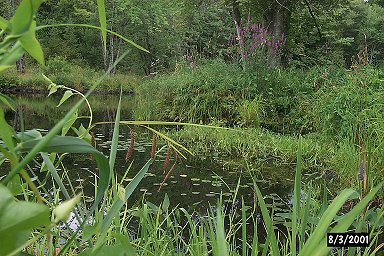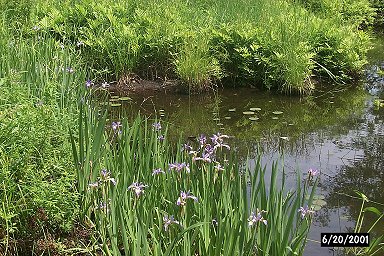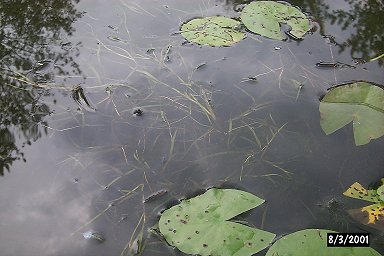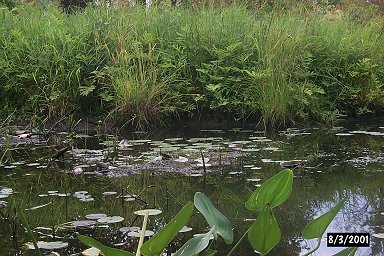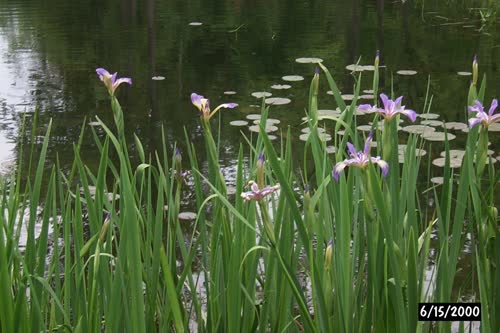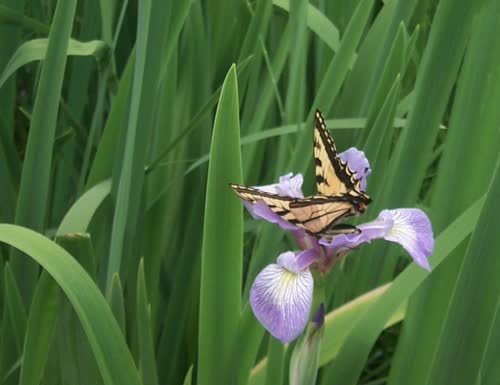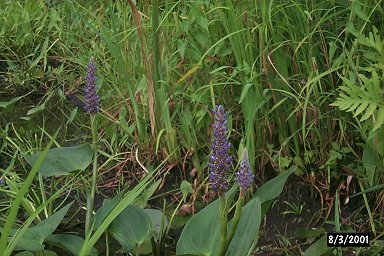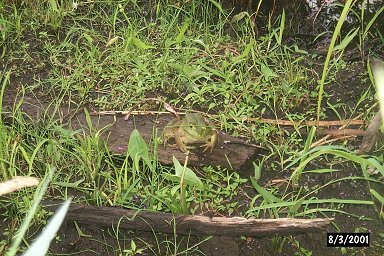Some people can just get up and do something, and I really admire people like that. Me, I can't buy a TV without researching it for 6 months, making spreadsheets and in general annoying my wife so much with may latest newfound video revelation to the point it puts her off wanting a TV altogether. So, it may come as no great shock that my first to two years in this house were spent planning this uber-pond. Where to put it to get the right amount of light - not too much, not too little, where would the pluming go, what windows can be be seen from so on and so forth.
Then one day an odd thing happened and I both gave up and was done, and that happened in the same instant.
A neighbor was visiting, a pond owning neighbor. We were in the backyard and I was explaining my plans, discussing the various pros and cons of this idea and that idea, and he looked at me like I just told him I was some kind of alien any only here on earth for a short time to scout out defenses for the upcoming Martian attack force.
He called me several names, ones generally unprintable in a family magazine, and cast doubts about my intelligence and ancestry, pointed, and said, quite succinctly "what's wrong with that one?"
Slack jawed, I stared. What's wrong indeed? Nothing!
I quickly added up how much it would cost me and how long it would take to make something like that, and when I hit the 10 year ten thousand dollar mark, gave up, rolled my eyes and said "Done. How do you like my pond?" to which he quickly replied "Well, given that I've been stealing plants from it for years for my pond I like it quite a bit". No wonder it seemed familiar whenever I went to his place, and in a case of "the pond-scum is always greener on the other side, it turns out we'd secretly lusted after each others ponds for a couple of years, but suddenly with this revelation, I was more than happy with mine.
Just look at the advantages: low maintenance. I cut the grass around the edges when I feel like is. Immune from the run of the mill predators: what are the biggest pests to other pond owners? Herons, raccoons and things like that. Not my problem, I'm more than happy to see herons and raccoons. Ok, well, herons anyway, living out here has, I'd admit made me less of a "oh they're so cute" raccoon fan that I was when I lived in the city. But we also have beavers (lots) and a family of otters - who this winter had a baby, and that thing really is as cute as all get out. But you get the point. This is a zero maintenance outdoor fishtank or sorts. I just don't get to pick the plants.
Not plagued by questions of "where to put plants" or "what do I have to do to keep them growing ok" or "are they in the right place" I really developed a newfound admiration for mother nature. She's a crafty sort and has done a really nice job of this.
And look at how the "will it overwinter" question was solved; sometime in the late fall I look out my office window, verify it's still there and say to myself "ayup" and I'm ready for winter. It freezes over nicely, the kids skate on it, snow piles up then it comes back in the spring just the exact same way I left it the year before. Good show mother nature.
So, there you have it, how to build the perfect pond - move to some place that already has one. Ok, so maybe that's not the most practical idea. Perhaps if you're looking to buy a place and one of the places you're looking at has a pond and all things being equal, get the pond. I can recommend it.
All silliness aside, the value in something like this is to get a good idea of how ma nature does this stuff. You really can't go too far wrong following her example. If nothing else the plants that ended up here in my pond are an obvious good selection for any pond in the northeastern part of North America, and probably apply nearly anywhere, although things no doubt get a bit dicey around Arizona and California. Depending on the legality in your area a few hours collecting native water plants may prove very worthwhile and certainly the price is right.
First the general layout. This pond isn't actually self-contained, it's a sort of big round basin off the side of the river that runs through out back yard, and while the river is about 8 feet deep at the middle and about 40 feet across, this pond is maybe 45 feet in diameter and at best a foot deep in the middle.
There's not a whole lot of fish life in there, but to me a couple of big seemingly fluorescent koi are not the reason d'etre for a pond, at least in my mind, no, it's the plant life, and unlike aquarium gardening where the phrase "does best emersed" elicits groans of disappointments from us plant keepers, this is where those plants really shine - at the waters edge.
To be sure, there are plants in the pond, there is a species of what is almost certainly Potamogeton growing all through it, there is something that looks like some green form of Ludwigia although I'm less than 10% sure that's really what it is. And then there are water lilies. Lots and lots of water lilies. The water lilies that seem to grow here in Ontario are the "little water lily" (Nuphar micropyllum) and fairly rare American Lotus yellow lotus (Nelumbo lutea) and the white water lily (Nymphaea odorata). The white ones are, as the name implies, fragrant while the little yellow ones are not; the lotus have long had uses in traditional native medicine: thinly sliced pieces of the root have been used to clean wounds. Around here it's a toss-up as to which of the white or small yellow species you'll see most of. Some bodies of water have mostly white ones, some have more yellow than others, and it's fairly rare to see an equal number of both. As a generality, the white is more common than the yellow from what I've seen. Neither grow in particular abundence here, that is neither the river or pond are chock fill of them, although there are ponds near here where to do grow that madly. But there's always a few and interestingly they seem to vary from year to year with regards to how many there are or how well they flower. I have no idea why.
Water lilies deserve a column (or several) of their own as they're fascinating and beautiful plants, not just for the flowers or fragrance but also their interesting property of keeping their leaves dry. These has been recently understood by science and you can read about it at NatGeo But the big winner in my mind is not the water lily, which has become almost synonymous with the word "pond", rather it's the iris, and my pond has a very large border of blue flag iris.
Now, there are about 30 species of native irises in North America, but the most commonly used ones for ponds are the blue flag Iris in the north and the yellow in more southern ranges although in some areas they both grow nearly everywhere. But, up here it's just on the hairy edge of being too cold for the yellow. Certainly the blue is very commonly found throughout this area, but you'll not find any yellow ones in the wild here.
Of course man has not sat idle and as he has done with all other plants these have been selectively bred to make unimaginable other color forms and shapes. There's a pretty good list that can be found at http://www.fishpondinfo.com/iris.htm and no doubt there are many others not on this list; There is a good page of links at http://gardeninglaunchpad.com/ir.html and if you really can't get enough Irises have a look at http://aleph0.clarku.edu/~djoyce/iris/dykes/pli.html. The bottom line is if you want a red or black Iris these can be had easily. But. I'm just as happy with the blue ones and incidentally these are the flowers you see on the French flag - the fleur de lis. These plants are terrific performers to the point of being weeds. I accidentally transplanted one to my front garden where by all rights it should not grow - they must have wet soil but, none the less they seem to thrive there and are now a real danger to the surrounding plants which they're trying to displace. Note to self: move them in the spring.
There are a number of arrowheads that grow in the area, "pickerelweed" being the most common here. They grow sort of ok in the ponds but grow much much better along the river and server as an almost seasonal time-keeping device.
They emerge fairly slowly in the spring, sending the characteristic arrowhead shaped leaves up but by mid summer their purple flowers appear as a purple band all along the riverbank. You'd think of first guess they might be a form of Sagittaria but they're not although I find it interesting that so many plants that grow wild here have tropical counterparts.
Rumor had it that "Radican swords" were growing near here although I could never find any and I thought it was odd that a plant I figured came from Brazil or maybe as far north ad Florida would grow up here so imagine my surprise when I found a couple growing on a public beach near here. I dug them up (unless that's illegal, in which case in a sudden and surprising move these plants uprooted themselves and hopped in the trunk of my car. Imagine that) and put them in the back yard in a container and announced to all my online buddies I'd found Radican swords and that the rumor was true. More than a few people broke the news to me: "no, you didn't, those are Alisma plantago aquatica". Well, ok, another childhood myth shattered, but hey they look just like Radicans. There are none of these in my pond or river, they seem to prefer the edges of lakes and from what I've read spread like weeds, so I'm not in any hurry to mess up the vegetation here by introducing them into either the pond or river. They're probably ok in containers in a pond though, and they are fairly stunning plants when they send up a 3 foot flowering pike with hundreds if not thousands of tiny flowers.
Stepping back from the waters edge a bit we find a couple of different plants that illustrate how specific some plants requirements are. Water lilies grow in the water, irises grow in the mud at the waters edge, and back only a few inches we find the grasses, sedges and for a few weeks of the year the Marsh Marigold or Cowslip Caltha palustris
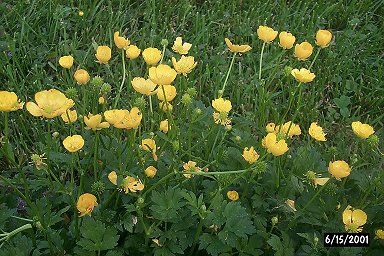
Marsh Marigold or Cowslip Caltha palustris
